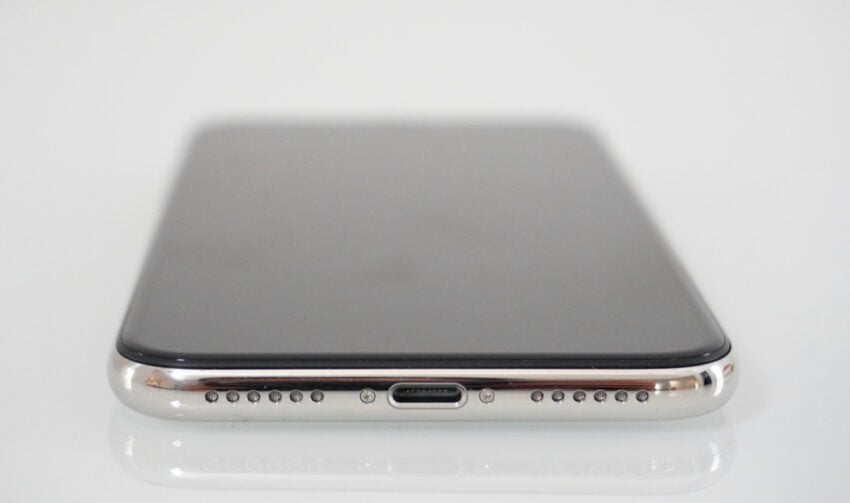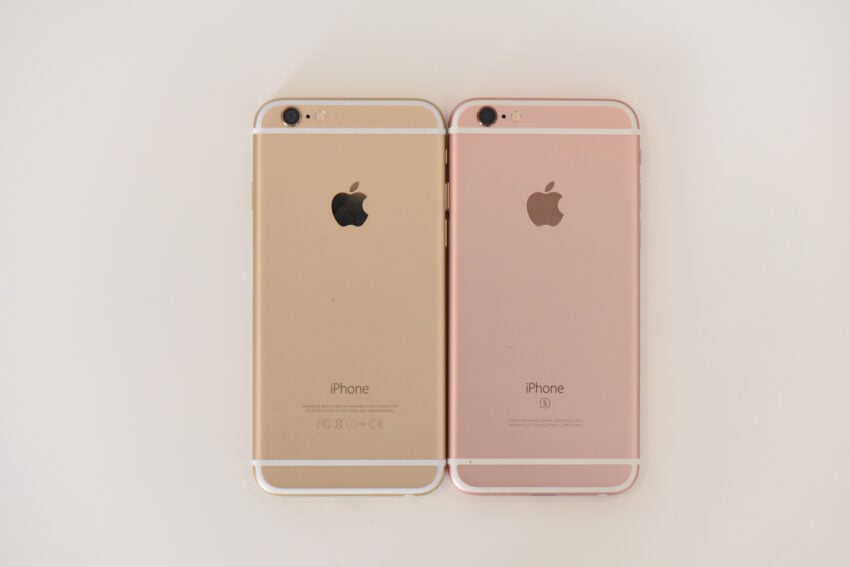Apple
Here’s How Long the iOS 15.7.7 Update Takes
Apple’s iOS 15.7.7 update is a small maintenance upgrade, but it could take quite a bit of time to install on your iPhone.
If you’re moving your iPhone from iOS 15.7.6 to iOS 15.7.7, you get the shortest list of changes and the smallest download size. If you’re upgrading from an older version of iOS, your iOS 15.7.7 download could be much larger because the changes from the update(s) you skipped are baked in.
While some of you might want to skip the iOS 15.7.7 download for the time being, most people should install the software right now or at some point in the near future.
If you decide to install iOS 15.7.7 on your iPhone, you’ll want to set aside some time to get the upgrade properly installed on your device.
Table of Contents
Moving a device from one version of iOS to another often causes problems so you’ll want to monitor the download, the installation, and your phone’s performance once the installation is complete.
We can’t tell you exactly how long the process will take because it will vary. That said, we can help you approximate how much time you should set aside should you choose to install the new software on your iPhone.
| Task | Time |
|---|---|
| Sync (Optional) | 5-45 Minutes |
| Backup and Transfer (Optional) | 1-30 Minutes |
| iOS 15.7.7 Download | 5 Minutes to 15 Minutes |
| iOS 15.7.7 Installation | 7 Minutes to 12 Minutes |
| Total iOS 15.7.7 Update Time | 12 Minutes to 1 Hour+ |
Pre-Installation
Before you start the iOS 15.7.7 download make sure you’re prepared.
If you don’t know how to properly prepare for an iOS upgrade, take a look at our pre-installation guide. It’ll walk you through the most important steps to take before you start the installation process.
You should be able to get through these steps in 30 minutes, but it all depends on your skill level and the current state of your iPhone.
If you haven’t backed up your data in awhile or if you aren’t familiar with iOS 15.7.7’s changes, the pre-installation process could take you a longer.
You don’t need to follow every single step in the guide, but at the very least you’ll want to make sure your phone’s data is backed up properly.
Data loss issues are pretty rare, but if you store sensitive data (photos, videos, etc) on your device, it’s always better to err on the side of caution.
iOS 15.7.7 Download
Once you’ve prepared, it’s time to start the download process.
Again, the exact size of your iOS 15.7.7 download will depend on your iPhone model and the version of iOS it’s currently running.
If your iPhone is currently running iOS 15.7.6 you’ll, again, see the smallest download size. If you’re running an older version, your download could be larger.
If you’re on a fast Wi-Fi network, the download should finish up in less than 10 minutes. If your connection is slower, or you’re downloading during peak hours, you might be looking at 10 minutes or more.
iOS 15.7.7 Installation
Once your device is done pulling iOS 15.7.7 from Apple’s servers, the installation process will begin. This could take longer than the download.
If you’re moving up from iOS 15.7.6, the iOS 15.7.7 installation should take 10 minutes or less to complete. It took about eight minutes to install on an iPhone 7 that was previously running iOS 15.7.6.
Your iPhone might reboot itself a couple of times during the installation process, but this is perfectly normal. Your device should boot up normally once the installation process completes.
Post-Installation
After the installation finishes up, you might need to spend time logging into your iCloud account and signing into your device’s various apps and services.
You also might want to spend some time checking your important data (photos, music, etc) to make sure everything carried over properly.
After you do that, make sure you test your core applications and services to ensure they’re working normally. New iOS software can cause apps to go haywire. If you notice an issue with one or more of your apps, try downloading the latest version.
You’ll also want to poke around your phone for bugs and performance issues. If you notice something take a look at our list of fixes for common iOS 15 problems.
Install iOS 15.7.7 for Better Security | ||||||||||||||||
If security is important to you, you'll want to think about installing Apple's iOS 15.7.7 update right away. iOS 15.7.7 brings three security patches to iPhone models lingering on iOS 15. These patches are essential if you want to keep your device and its data safe from harm. For more details, head over to Apple's security site. As for older updates, iOS 15.7.6 had several security updates on board. For more information about the patches, head here. The iOS 15.7.5 update patched up actively exploited vulnerabilities making it an extremely important upgrade for your iPhone. To learn more about them, check out Apple's guide. iOS 15.7.4 brought important security fixes to older iPhone models as well. If you want to learn more about these changes, check out Apple's guide. iOS 15.7.3 also brought a batch of security patches to iPhone. You can learn more about these changes right here. iOS 15.7.2 brought numerous patches along with it. For more about them, head over to Apple's website for more details. iOS 15.7.1 update brought 17 security patches with it while iOS 15.7 delivered 11 security patches to iPhone. If you want a look at the details, head over to Apple's security site for more information. If you missed iOS 15.6.1, it had two security patches on board. You can read more about the pair on Apple's website. If you missed Apple's iOS 15.6 update, it had 30+ security upgrades on board. You can learn more about them right here. If you missed iOS 15.5 it brought 27 new security patches to the iPhone. You can learn more about these patches over on Apple's security site. If you missed iOS 15.4.1, it had one new security patch on board. You can read more about it over on Apple's website. If you missed the iOS 15.4 update, it had a whopping 36 new security patches on board. If you want to learn more about these patches, head on over to Apple's security site for the particulars. If you missed iOS 15.3.1, it had one security patch on board. For more about it, head over to Apple's security page. If you missed iOS 15.3, you'll also get its patches with your upgrade. iOS 15.3 brought 10 new security patches to iPhone users. If you're interested in the details, you can read more about them right here. If you missed iOS 15.2.1, you'll get its security patch with your upgrade. You can learn more about the change over on Apple's website. If you missed Apple's iOS 15.2 update, you'll get its 30+ security patches with your upgrade. You can read all about them over on the company's security site. iOS 15.2 also included some important upgrades to privacy. The software brought the company's App Privacy Report to Settings. This lets you see how often your apps have accessed your location, photos, camera, microphone, contacts and more during the last seven days. You can also see their network activity. In addition, iOS 15.2 brought Apple's communication safety features for kids. You'll find these features in the Messages app, in Siri, in Spotlight, and in Search. If you missed iOS 15.1, iOS 15.7.7 will bring its security patches to your iPhone. You can read more about them on Apple's website. If you missed iOS 15.0.2 you'll also get its security patch with your upgrade. You can learn more about it right here. iOS 15.0 also brought numerous security patches to your iPhone. If you'll be moving up from iOS 14 and you're interested in the exact nature of these improvements, you can read about them over on Apple's security website. Apple's updated its website with new information about iOS 15's batch of security patches. The company now says the software patched up an issue that could have exposed a user's private Apple ID information and in-app search history. It also says iOS 15 patched up an issue that allowed apps to override Privacy preferences. If you skipped iOS 14.8 or any older versions of iOS, you'll get the security patches from those updates with your iOS 15.7.7 update as well. In addition to those patches, iOS 15 comes with some security and privacy upgrades including improvements to Siri. Requests made to Siri are now processed on the device itself using Neural Engine. This makes it more secure. If you're an Apple Card user, you'll now get a security code that changes regularly to use when you make online transactions. Apple's also included a built-in authenticator that's similar to Google Authenticator. This will let you generate verification codes for enhanced sign-in security under your Passwords. There's also a Mail feature that hides your IP address. | ||||||||||||||||


















Mac Guru
11/09/2022 at 3:46 am
Much appreciate the story. It’d be good to mention the times for iPad OS 15.7 to 15.7.1 as well or link to a story about that.
Download of iPad OS 15.7.1 on an Ethernet connection is fast. But installation onto the iPad by USB cable takes *forever*!
It’s been almost a half hour and the installation and updating is not even *half* way through!